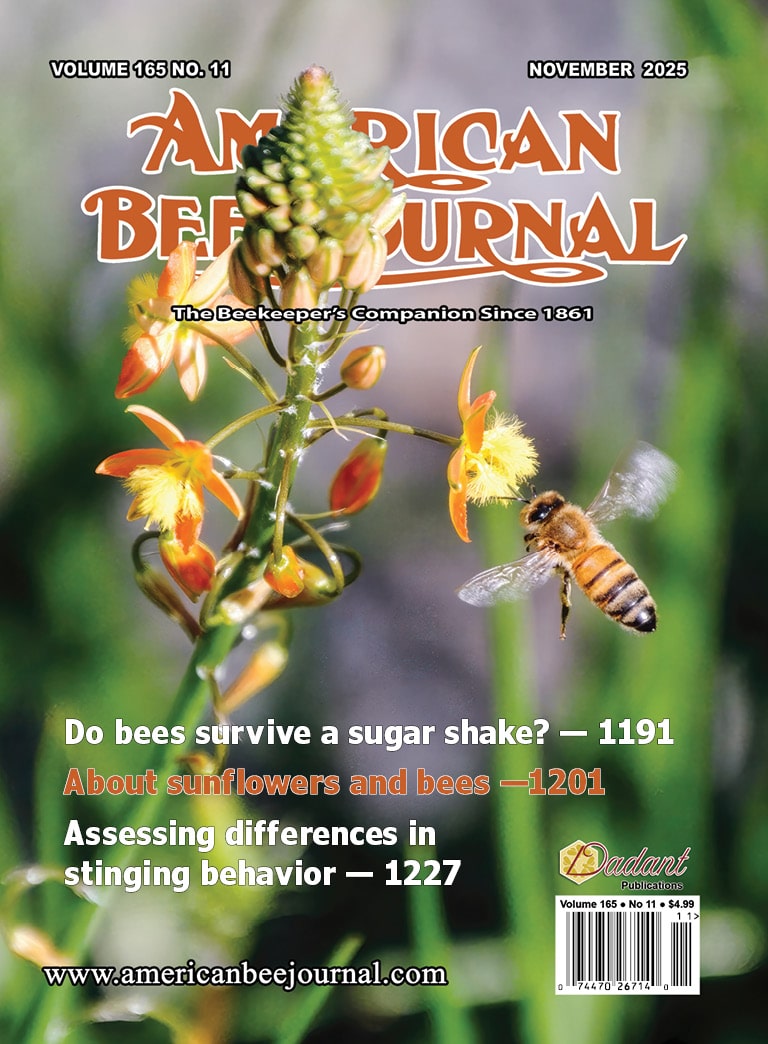We are continuing a short series focusing on that most pivotal of events in the annual cycle of the honey bee colony – the swarm, the superorganism’s moment of reproductive fission. Beekeepers have long been trained to view swarming as the greatest threat to making a large honey crop, and rightly so. Managed colonies that swarm produce half the honey of colonies that don’t, as shown in studies from Canada1 and Russia.2 It’s not hard to understand why. A first, or prime swarm, can easily reduce a colony’s worker population by half. And this always happens at the worst possible time from a honey producer’s point of view – the beginning of the nectar flow, which of course is the best possible time from the bees’ point of view, as the early start permits both the swarm colony and parent colony optimum time to recover from the traumatic division.
Swarming is such an affront to honey production that swarm prevention very nearly defines spring management. In what amounts to an annual contest with nature, beekeepers reverse hive bodies, add supers, equalize brood, and cut out queen cells every spring in an attempt to curtail swarming. For the most part these measures work, although they are laborious, yet there always seem to be some colonies that “hit the trees” no matter how diligent the beekeeper’s efforts. What’s more, there’s evidence that this campaign may be ill-advised from the point of view of honey bee health: new research has shown that colonies left free to swarm have fewer brood diseases and fewer Varroa mites.3 However, until we have a more thorough picture of swarming’s economic benefits and costs, it’s hard to imagine a wholesale swing away from swarm prevention management in the near future.
It’s also worth noting that nearly all the conventional swarm prevention measures like those mentioned above are aimed at that preparatory phase of swarming that I described last month, the primer conditions – those colony states in late winter and early spring that interact to hasten swarm preparation, chief of which are increasing worker density in the cavity which reduces the distribution of queen mandibular pheromone which, in turn, stimulates the production of queen cells. It’s also worth noting that those measures are most successful that target earlier primer stages over later ones, so that, for example, reducing density by adding supers will be more effective than cutting out queen cells.
This month we are talking about the releaser conditions for swarming – those conditions that happen in near time that trigger a swarm event on any particular afternoon – and the events that follow. We pick up where we left off last month: the colony is now dense with bees and brood; workers increasingly agitate the queen with “vibration dances” that cause her to increase her rate of movement, lose weight, and regain the capacity for flight; high worker density is slowing the equitable spread of queen mandibular pheromone among the workers who respond by rearing queen cells. Cells are begun or torn down according to the quality of the nectar flow, until a day finally arrives when optimum conditions converge: the population is high, ripe queen cells are present, nectar availability has stabilized, and it’s a beautiful sunny day.
On the days leading up to that propitious afternoon a handful of individuals sets in motion the chain of events that releases the swarm event. Already by now, some of the colony’s scouts have diverted away from flowers and begun looking instead for nest cavities.4 These individuals begin agitating for greater excitement in the nest by giving other workers and especially the queen “piping” signals – audible vibrations applied to a surface or to another bee. The frequency of piping signals delivered to the queen increases dramatically up to the very hour of the swarm’s departure.5 Additionally, scouts begin “buzz runs” – provoking action in nestmates by running through clusters of inactive bees while audibly buzzing their wings. Buzz runs tend to be aimed at the nest entrance, and it appears that buzz-running stimulates other nestmates to do the same. Eventually the activity reaches such a pitch of excitement that the swarming cohort takes to the air, some of the workers pushing the old queen out the door to join them (Fig. 1A). All this seems frenzied, dramatic, and decisive – and it needs to be, because it is critical to the success of the project that all swarming bees participate together in one coordinated action. Failure – by which we mean numerous small inviable swarms, or numerous aborted attempts, or failure to swarm altogether would at best cheat the colony out of reproducing, or at worst hazard the survivability of the queen and the parent colony because of lost production and wasted energy.
The queen quickly lands on some object, apparently at random. She is not a very good flyer and, like the vast majority of workers swarming with her, she knows nothing about where they’re going. Beekeepers can attest to the randomness of these so-called swarm bivouacs: they can settle anywhere, including automobiles, lawn furniture, even major-league baseball stadiums in the middle of televised games. In any case, once settled, the queen’s pheromones are critical to stabilizing the cloud of bees which within minutes settles into a tight cluster around her (Figs. 1B-C).
To my knowledge, the evolutionary adaptiveness of these temporary clusters has not been systematically studied, but from a methodological point of view they do solve some important problems – namely, a bivouac provides the social context for settling who’s committed to the swarm and for deciding where the swarm’s going.
It’s likely that many of the bees that participate in the initial mad rush out the door fail to commit to the …


